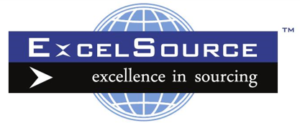Five business change mistakes and how to avoid them
Sovereign debt crises, credit rating down-grades, volatility in global markets and unprecedented trading conditions – businesses need to be flexible and agile just to stay alive at the moment. The more quickly and effectively a company can adapt to change at the moment, the more competitive it will remain.
This brings change management to the top of the agenda and makes it a critical discipline for any organisation to master, as all industries across all geographies are susceptible to the internal and external forces of change.
Implementing change across an organisation, let alone wholesale business transformation, is never easy though. You have to make sure there’s buy-in and consensus for the programme, you have to bring management and employees with you on the journey, and you have to realise the benefits or savings of the “While implementing change is never going to be easy, you can at least avoid some of the obvious pitfalls”undertaking, all of which have their own set of unique challenges.
So, here are five of the classic business change mistakes, with tips on how to manage or avoid them!
1. Not driving from the Business Case
Firstly, it’s essential to have a formalised and agreed business case for any change programme. This is the key reference point that sets out the reasons for embarking on a transformation programme, which all parties can come back to if they ever start losing their way. It provides clarity on what needs to be delivered and why, as well as the baseline for costs, savings and return. The business case also forms the basis from which project plans, communications plans and execution plans grow. When companies don’t drive forward from the business case, they can easily lose their way and lose sight of their end goal.
2. No buy-in from the top
Hopefully all the necessary people have signed-off the business case, but this doesn’t mean senior stakeholders are automatically bought-in to the change activity. Committed senior sponsors can remove project roadblocks, lead communications activities, and (if doubt sets in) they can be the advocates for the programme among their peers – all of which is invaluable to seeing a change through to completion. Without spending time nurturing the relationship with a senior stakeholder, project delivery is put seriously at risk.
3. Forgetting to communicate
It is a classic mistake to think that there is a mandate for change, the senior management team has bought in, and therefore it will just have to happen; people will just have to accept it. But, without explaining the need for change, the milestones along the way and the effects it will have on people, employees can be very resistant. In the worst case scenario, particular influencers among the employee population may even be able to sabotage a programme from the inside by refusing to adopt new practices. A robust communications plan that utilises senior leaders; that mirrors the project plan and the business case is a relatively simple step that will help mitigate risk and the negative impact of change.
4. Weak project management
Businesses and change programmes are full of influencers – people who want to do things differently, do things their way, or not do them at all. Weak project management will make milestones slip, take a programme off-course, add cost into the business and leave a business case in the dust. A strong project manager however can co-ordinate all angles and aspects of the change activity; they will be the ones to drive them forward to delivery and they will have the skills to manage influencers, as well as senior stakeholders. Strong project managers are worth their weight in gold, as they can be the difference between successfully achieving the end goal or missing it completely.
5. Not seeing it through
It’s fair to say that one of the decisions any change programme will face is whether to “step away”; to acknowledge the wrong path has been chosen, or that the market has moved on and it’s no longer the right thing to continue implementing a programme. If this is the case, the difficult, but courageous thing to do is walk away before wasting any more time and money.
But, if the change activity is still the right thing to do, a company must see it through.
It’s damaging to employee morale, market confidence and bottom-line to embark on a transformation activity, that has inherent costs, and not to execute on it. If the business case is still sound, then companies have to stick with their commitment to change – through thick and thin. Adoption of change is always difficult and a programme may not end when the final milestone is in place, as organisations have a habit of snapping back into their old ways if new practices aren’t seen through (from top down) and have time to become second nature.
The irony is that while a company is going through its change programme the ground is still shifting beneath its feet. The competition and the market aren’t doing to wait politely while a thorough and robust change management programme is executed. By the time the business case is agreed, the project plans are written and the first stakeholder meeting is scheduled, the world has moved on. So adaptability and flexibility are always necessary factors within a programme. But when speed is of the essence, especially in today’s trading environment, companies can’t afford to get the basics wrong. So, while implementing change is never going to be easy, you can at least avoid some of the obvious pitfalls.
These five pointers are some that the ExcelSource team have used and developed processes around to deliver maximum value to our clients’ organisations.

